We've been waiting quite a while for the Canon EOS 6D Mark II to arrive. In fact, it's some five years since the original Canon EOS 6D was announced – and at the time it was the most affordable full-frame DSLR available.
While it lacked some of the more desirable features found on Canon's pricier models further up the range, it offered users a pretty affordable way into full-frame photography.
Quite a lot's changed since the arrival of the EOS 6D though, with not only Nikon offering some very tempting competition in the shape of the D610 and D750, but Sony's Alpha A7 and A7 II offering another affordable route into full-frame photography.
So does the arrival of the EOS 6D Mark II shift the advantage back to Canon in the contest to attract those looking to make the switch to full-frame photography?
Features
- Full-frame CMOS sensor, 26.2MP
- 3.0-inch vari-angle touchscreen, 1,040,000 dots
- 1080p video capture
As you'd expect after a five-year gap, the EOS 6D Mark II comes with a wealth of improvements over the EOS 6D.
Perhaps the headline change is the new sensor, with the EOS 6D Mark II sporting a 26.2MP CMOS sensor that not only offers a sizeable boost in resolution over the 20.2MP chip in the EOS 6D, but also a lot more pixels than the EOS 5D Mark III's 22.3MP sensor.
The new sensor brings with it a native sensitivity range of ISO100-40,000 which can be expanded to an equivalent of ISO50-102,400, matching the expanded sensitivity ranges of both the EOS 6D and EOS 5D Mark III.
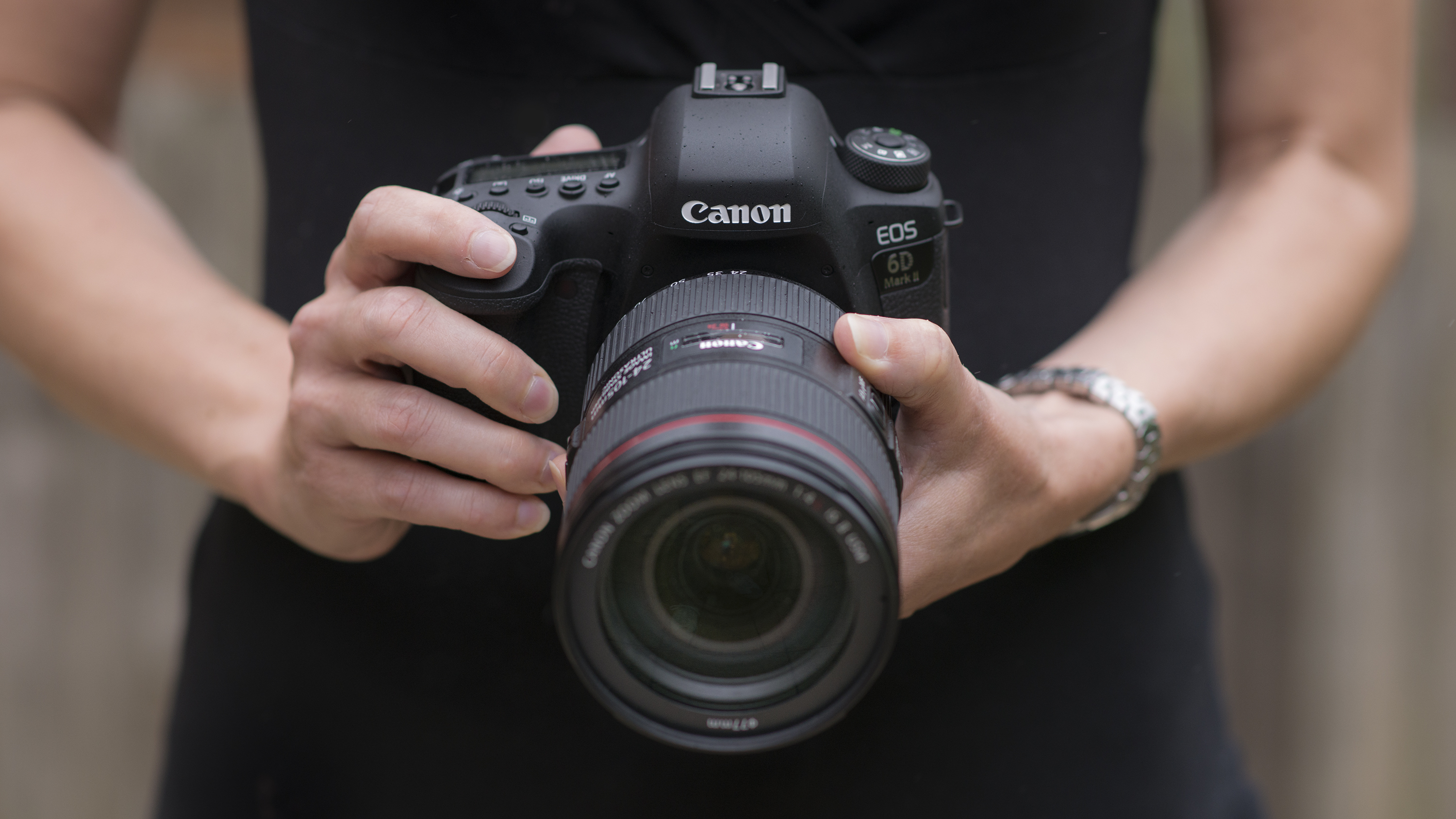
While these cameras may all share the same ISO ceiling, the EOS 6D Mark II boasts Canon's latest DIGIC 7 processing engine, which is capable of processing information some 14 times faster than the previous DIGIC 6 (the EOS 6D featured the DIGIC 5 engine), and should see it handling image noise better at higher sensitivities.
It's also the first time the DIGIC 7 engine has been used in a full-frame EOS DSLR; until now it's only featured in some of Canon's recent APS-C DSLR bodies and PowerShot compact cameras.
One of the compromises with the original EOS 6D was its 97% viewfinder coverage – that 3% shortfall may not sound like much, but stray elements can still creep into the edge of the frame if you're not careful, and you're likely to only notice these once you're reviewing your images on the rear display.
The good news is that this stat has been improved on the EOS 6D Mark II – but only by 1%, to offer a coverage of 98%, so still not quite matching the likes of the D750's approximate 100% coverage.
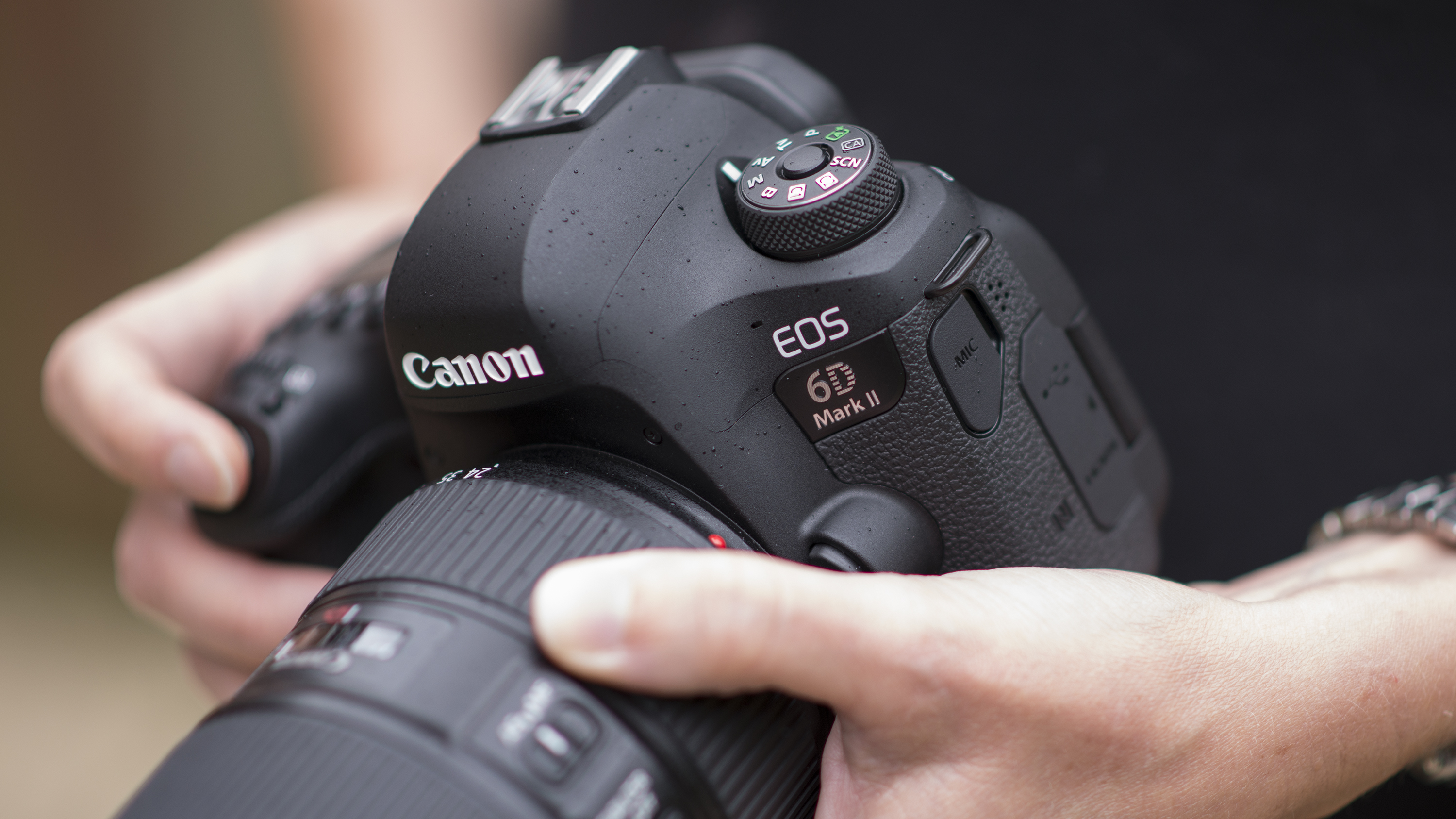
While the viewfinder may seem like a minor improvement, the rear display is quite a different story. No longer sitting flush to the body as it did on the EOS 6D, the 3.0-inch vari-angle display can not only be pulled away from the body, it's also now touch-sensitive.
The expected trio of connectivity options – Wi-Fi, NFC and Bluetooth – are available, with the latter being a low-energy connection, meaning you can always be connected to the camera and enabling the rapid remote transfer of images from your camera to a compatible smart device.
Also on-board is Canon's five-axis digital image stabilization for hand-held video recording. Designed to work with video but not stills, the system works in conjunction with the brand's IS-equipped lenses.
Staying with movie capture, Canon has opted not to include 4K capabilities on the EOS 6D Mark II, instead limiting it to Full HD with frame rates up to 60p. That's an improvement on the 30p offered by the EOS 6D, but we're sure some people will be scratching their heads trying to work out why 4K capture has been left off the EOS 6D Mark II – especially as this is an area where Canon has excelled at in the past.
There is a 4K timelapse option however, which stitches images together into a 4K-resolution video. There's also a microphone input, although there's no headphone socket if you wish to monitor audio.
Build and handling
- Aluminum alloy and polycarbonate body
- Dust- and moisture-resistant
- Weighs 765g
Like the original EOS 6D, the Canon EOS 6D Mark II is crafted from a mixture of aluminum alloy and polycarbonate with glass fiber, and while it doesn't have quite the same 'pro' feel as the likes of the EOS 5D Mark III or Mark IV, it nonetheless feels very well put together.
It's also nice to see the camera featuring dust and moisture seals – having used the 6D Mark II in some very wet conditions in Norway, with the camera getting drenched on more than one occasion, we can confirm that this camera will more than hold its own when the elements are against you.

Proportions-wise, the camera is ever so slightly more compact than the EOS 6D – those looking to upgrade from the older model may be a little disappointed to hear that the BG-E13 battery grip designed for the 6D isn't compatible with the EOS 6D Mark II, with a new BG-E21 battery grip accompanying the new camera.
The grip on the body of the 6D Mark II is excellently sculpted, and ensures the camera fits very comfortably in the hand, while the weight of 765g with battery and card in place is just 10g heavier than the original 6D (though it's actually not much lighter than the 800g EOS 5D Mark IV). It also felt very well balanced in the hand when teamed with the EF 24-105mm f/4L IS II USM we shot with.
As for the layout of buttons and controls, if you're coming from the EOS 6D you should feel right at home with the EOS 6D Mark II, as the control layout on the two cameras is pretty much identical.
There's a large LCD display on the top plate with plenty of information on tap, while there are controls for the AF, drive, ISO and metering between the LCD and the front command dial. The only new addition is a small button next to the command dial that affords access to the camera's focusing modes to complement the 6D Mark II's more sophisticated AF system.
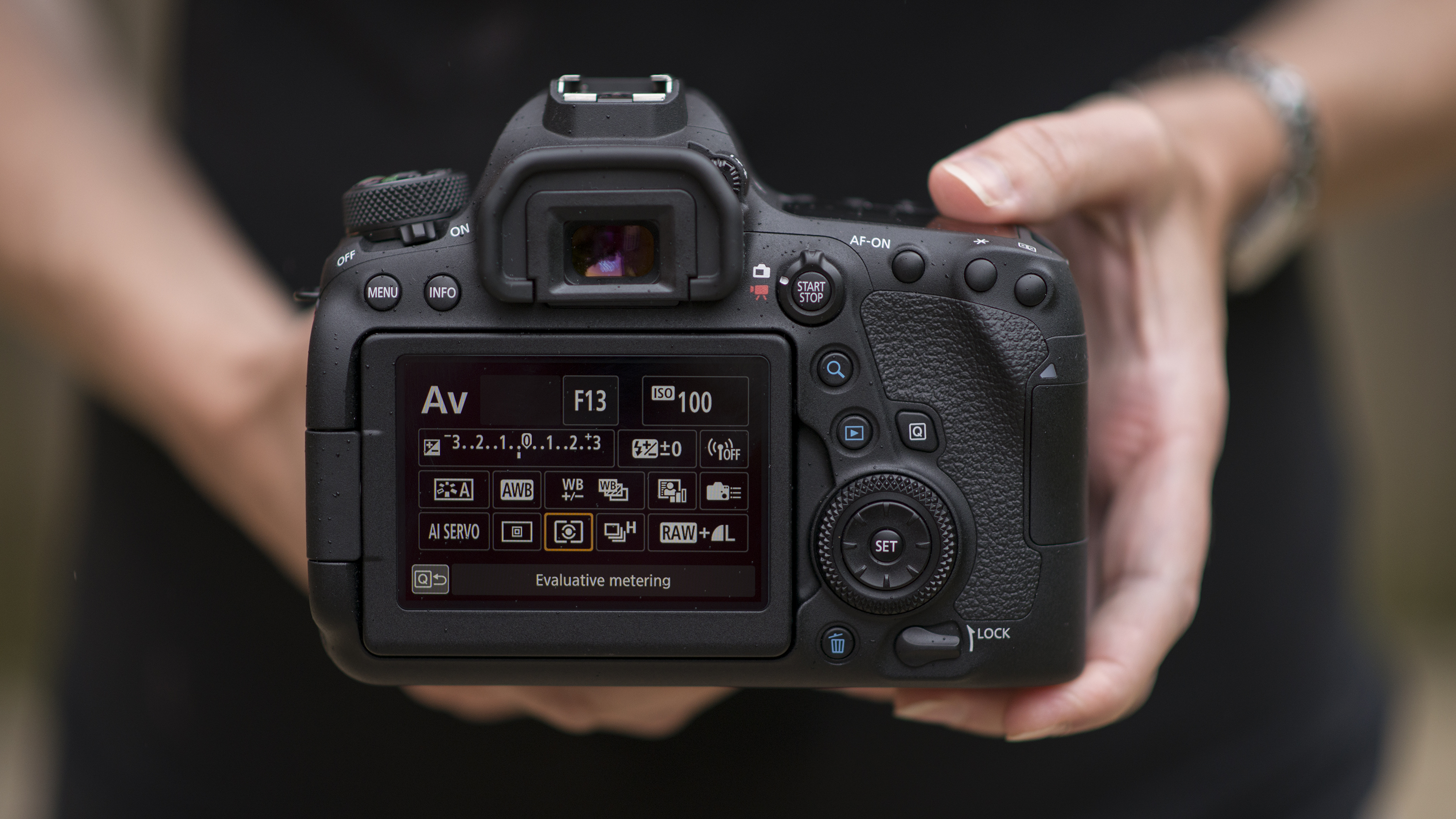
Sticking with the same control layout as the EOS 6D means the EOS 6D Mark II forgoes a joypad on the rear of the camera to quickly move the AF point, as we've seen on some other EOS DSLRs; instead you use the multi-directional controller to do this. While it would have been nice to see this extra control incorporated into the camera, AF point selection is still pretty quick to achieve using this method.

That just leaves the rear display, which as we've mentioned can now be angled away from the body to suit a plethora of shooting angles. While its resolution doesn't get a boost over the display on the EOS 6D, the 1,040,000-dot screen looks decent enough, while the touch interface on the EOS 6D Mark II is one of the best around – from adjusting settings to flicking through images, it works a treat.
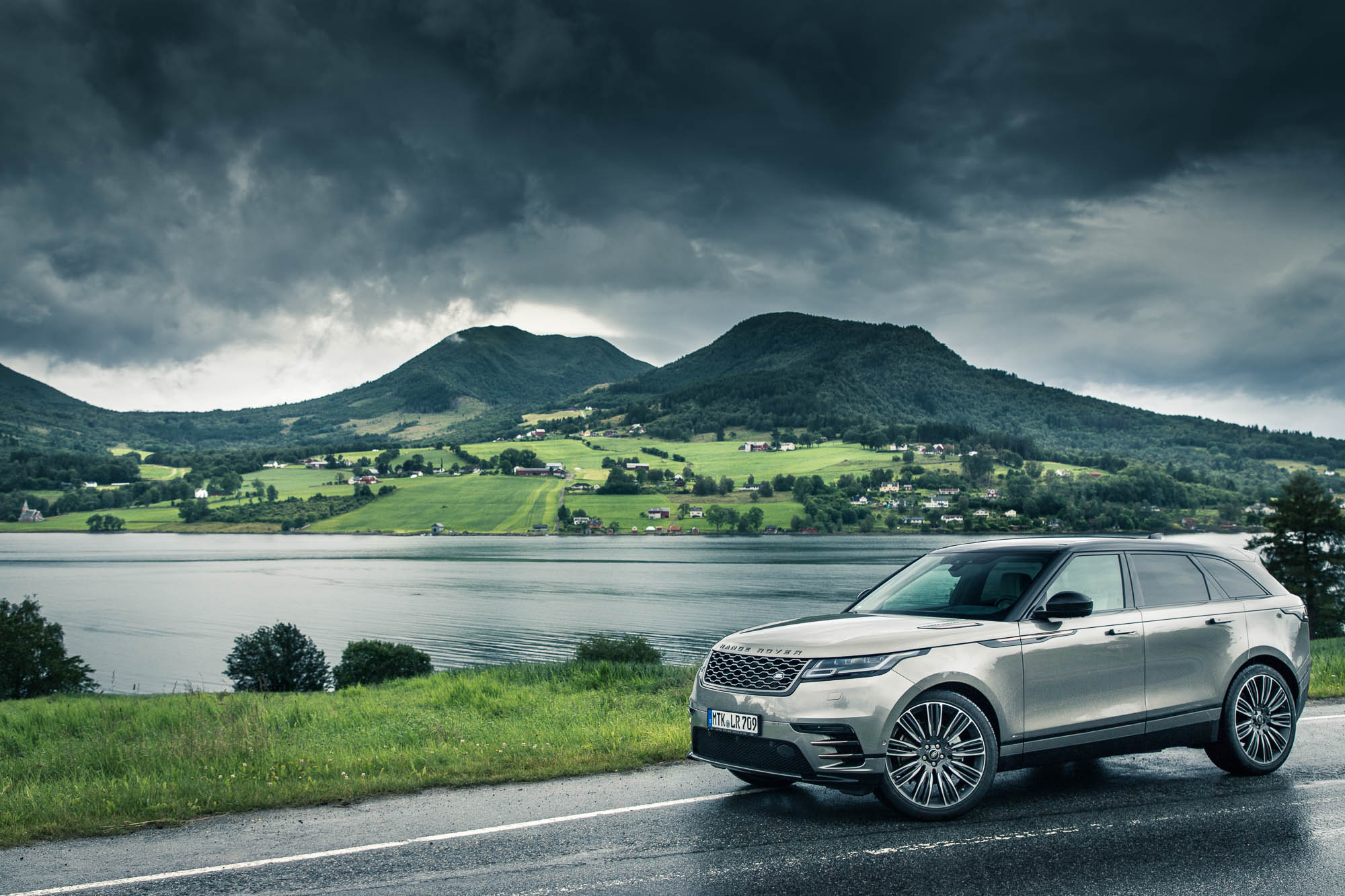
Autofocus
- 45-point AF, all cross-type
- Sensitive down to -3EV
- Dual Pixel CMOS AF system
The 11-point AF system on the original EOS 6D looked out of date even when that camera was launched, and it came in for a bit of stick – particularly as only the central point sported a cross-type sensor. So it's no surprise to see the EOS 6D Mark II get a hefty bump in AF coverage.
Rather than borrowing the 61-point AF system from the EOS 5D Mark IV, the 6D Mark II looks to its APS-C stablemates and employs a 45-point AF system that's very similar to the one inside the recent EOS 80D and EOS Rebel T7i / 800D.
And the good news is that rather than featuring one lone cross-type point (cross-type points are sensitive in both the horizontal and vertical planes for greater accuracy), all 45 points are cross-type, with the central point being dual cross-type, featuring a second point oriented at 45 degrees to the regular point for even greater precision. Furthermore, 27 of these remain operational when using a lens, or lens/teleconverter combination, with a maximum effective aperture of f/8, with nine remaining cross-type.

The EOS 6D Mark II offers a decent amount of control over customizing the AF setup too, with some 16 options to tweak should you wish. However, there are no AF 'case studies' (which specify the tracking sensitivity, acceleration and deceleration tracking and AF point switching depending on the subject you're shooting) as we've seen on the likes of the EOS 7D Mark II and EOS 5D Mark IV.
Coverage of the 45 AF points is quite heavily weighted towards the central portion of the frame, meaning you'll have to regularly recompose shots if your subject is off-centre.
That aside, AF performance is very good. We shot under a variety of lighting conditions on our trip to Norway and found focusing to be very good, with subjects acquired swiftly and accurately in most instances. Even in poor light the EOS 6D Mark II didn't really struggle – thanks in part, no doubt, to the camera's AF system being sensitive down to -3EV.

The EOS 6D Mark II also gets Canon's impressive Dual Pixel CMOS AF for Live View photography and video capture. It's a big improvement over the EOS 6D's rather clunky system, delivering smooth and fast focusing, especially when used in tandem with the touchscreen to select your desired point of focus.
Performance
- 6.5fps burst shooting
- Burst depth up to 21 raw frames / 150 JPEGs
- 1,090-shot battery life
It's no surprise to see that Canon has upped the burst rate of the EOS 6D Mark II to 6.5fps, from the 6D's 4.5fps. Not only that but the burst depth has also been improved, with the new camera capable of shooting 21 raw files in succession compared to its predecessor's 17.
Interestingly for those who like to shoot JPEGs, however, the 150-frame burst depth offered by the EOS 6D Mark II is actually quite a drop from the 1,250-shot limit on the EOS 6D, although a 150-frame burst depth is hardly limiting. It’s also interesting to see that Canon hasn't included UHS-II support for the EOS 6D Mark II's single card slot, which might have improved that number, although any benefit would depend on how quickly the camera can deal with the information to begin with.
Either way, this isn’t a camera aimed particularly at sports photographers, and 6.5fps is a very credible burst rate for a full-frame camera at this price point, potentially suiting it to situations where the original EOS 6D may have fallen short.

The 6D Mark II uses the same 7560-pixel RGB+IR metering sensor as the Rebel T7i / 800D, with 63-zone Evaluative, Partial, Centre-weighted and Spot metering options.
As we've found with other Canon DSLRs that use this system, the evaluative system does a sound job most of the time, but it’s worth keeping in mind that the weighting is applied to the active AF point, which can mean you need to use exposure compensation in high-contrast situations; we experienced a couple of occasions where the same shot threw up two different exposures simply because we shifted the AF point slightly.
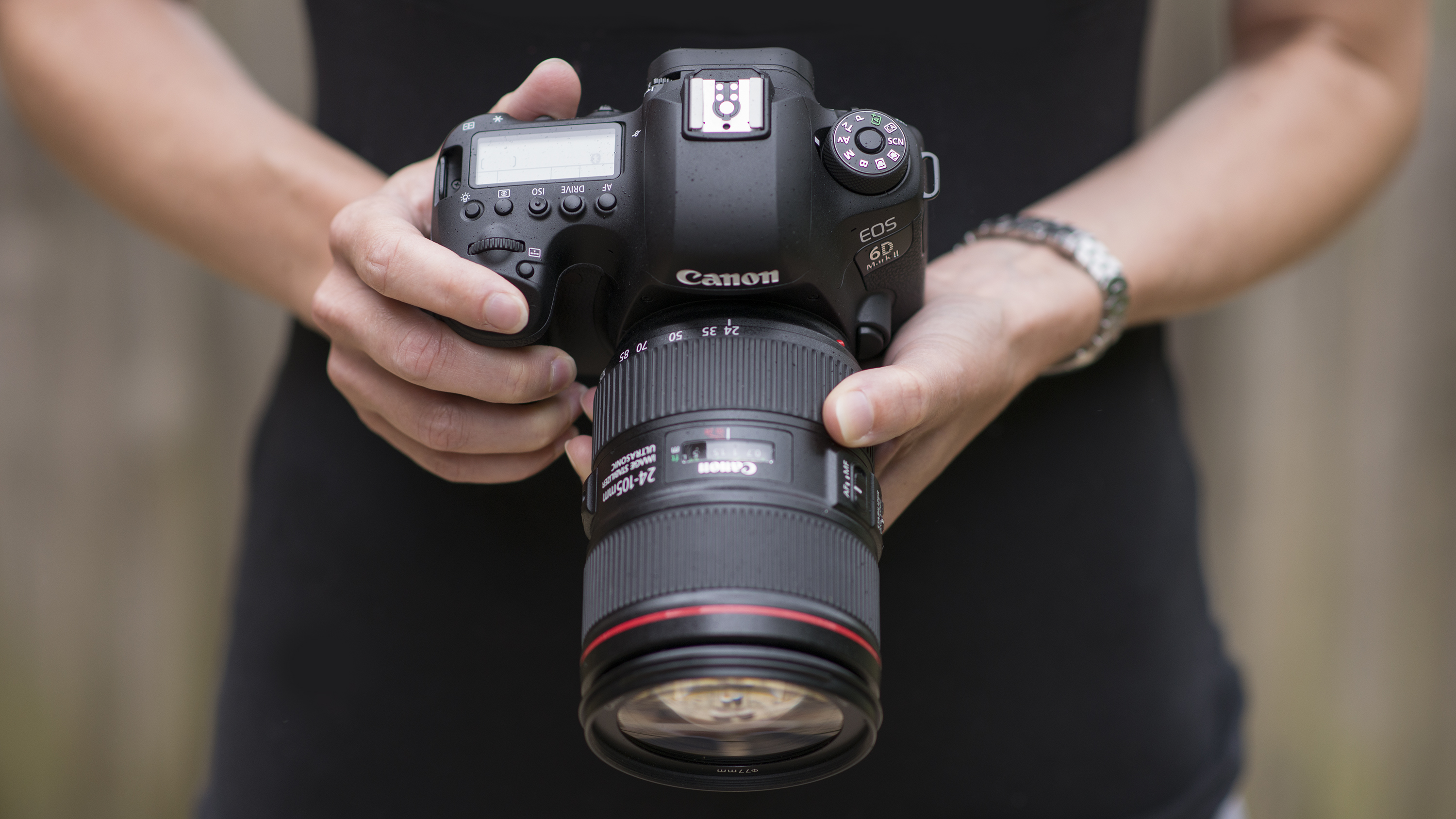
The EOS 6D Mark II's auto white balance does a very good job. There are actually two auto white balance options: Ambient Priority mode delivers slightly warmer results, helping you retain the overall ambience of the scene, while White Priority can deliver clean, neutral results even under artificial lighting.
Canon has also added the flicker detection option we’ve seen on previous EOS DSLRs, to help maintain consistency when shooting under artificial light sources. This is great news for those shooting indoors, perhaps events or sports, where such lighting is commonly used.
Battery life is very good, with the LP-E6N unit rated for up to 1,200 shots. Over the course of two days of extensive shooting the 6D Mark II's battery status bar hardly budged.
Image quality
- ISO100-40,000, expandable to 50-102,400
- +/-5 EV exposure compensation in 1/3 or 1/2-stop increments
- Disappointing dynamic range
The EOS 6D Mark II is unique at this level in that it features a 26.2MP sensor; 24MP is the norm, so the 6D Mark II has a 2MP edge over its closest rival, the Nikon D750. In reality though, this makes a negligible difference to the amount of extra detail the EOS 6D Mark II can resolve – it's comparable to the D750, allowing you to happily print A3+ images, and even squeeze out large prints if necessary.

Looking at ISO performance and the EOS 6D Mark II puts in a solid, if unremarkable performance. JPEG files appear very clean throughout the ISO range, but when you look at the corresponding raw files, it becomes how much noise reduction is being applied to those JPEGs.
Raw files compare well to images from the EOS 5D Mark III, although we'd have expected things to have improved somewhat given the five-year gap in technology. Results at ISO800 hold up well, with minimal signs of noise, while results at ISO4000 are pretty good too; there are certainly signs of luminance noise at this sensitivity, but surprisingly little chroma noise (color speckling).
Beyond that, while both luminance and chroma noise become more pronounced, at ISO12,800 and with some post-processing it's still possible to get a satisfactory result, with a decent amount of detail; we'd probably avoid going any higher than that unless absolutely necessary.
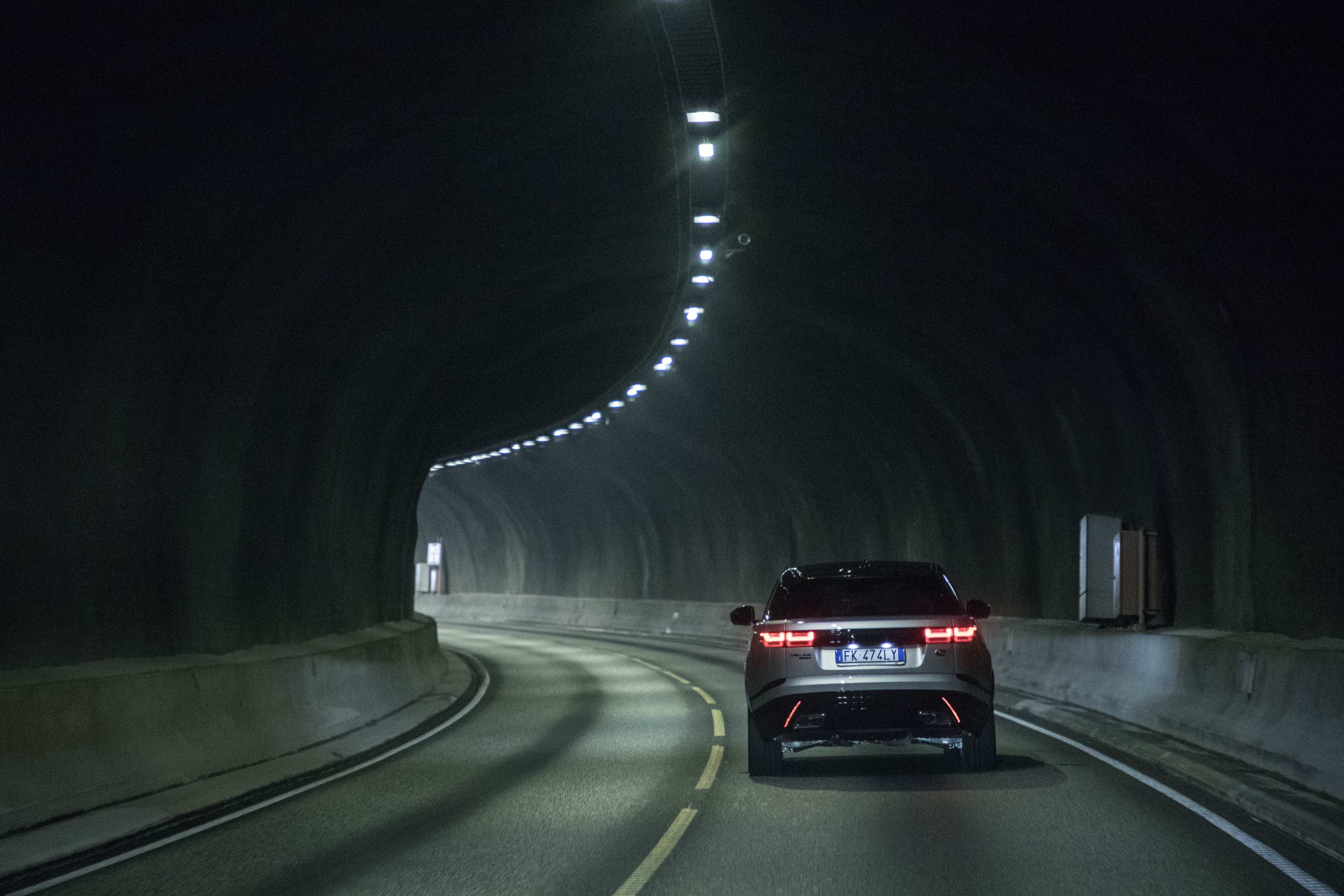
Dynamic range is an area where Canon DSLRs have lagged behind a bit compared to rival cameras from Nikon and Sony, so there was a certain amount of expectation placed on the new 26.2MP sensor.
However, while it's possible to recover a good bit of lost detail (as above), noise is much more noticeable compared to a similar image from a Nikon D750 when you look closely. And what's more disappointing is the fact that the 24.2MP APS-C sensor used by the likes of the EOS 80D actually holds up slightly better when images taken at lower sensitivities are pushed in post-processing.
Verdict
With the EOS 6D Mark II Canon has certainly made some significant improvements over the outgoing EOS 6D, packing in a host of new features including a fresh sensor, a faster processor, a much more credible AF system and a stronger burst rate. It's a much more well-rounded and better specified camera than the EOS 6D, but it's not without its issues.
The poor dynamic range is disappointing, and while the boost in AF performance is definitely welcome, coverage is too heavily weighted to the centre. The lack of a 100% viewfinder is also a pity, and the fact that the model misses out on 4K video will disappoint some.
These issues take the shine off what is otherwise a very nice full-frame DSLR that's a pleasure to shoot with, with the vari-angle touchscreen a nice bonus. It will certainly please Canon users looking to make the move into full-frame photography, but others might be better served elsewhere.
Competition

Nikon D750
The nearest rival to the EOS 6D Mark II, the Nikon D750 is a brilliant full-frame DSLR. It can't match the 6D Mark II's Live View AF performance, but the D750 does offer a broader dynamic range, and a more advanced 51-point AF system with a clever 3D-Tracking system.
Read the full review: Nikon D750
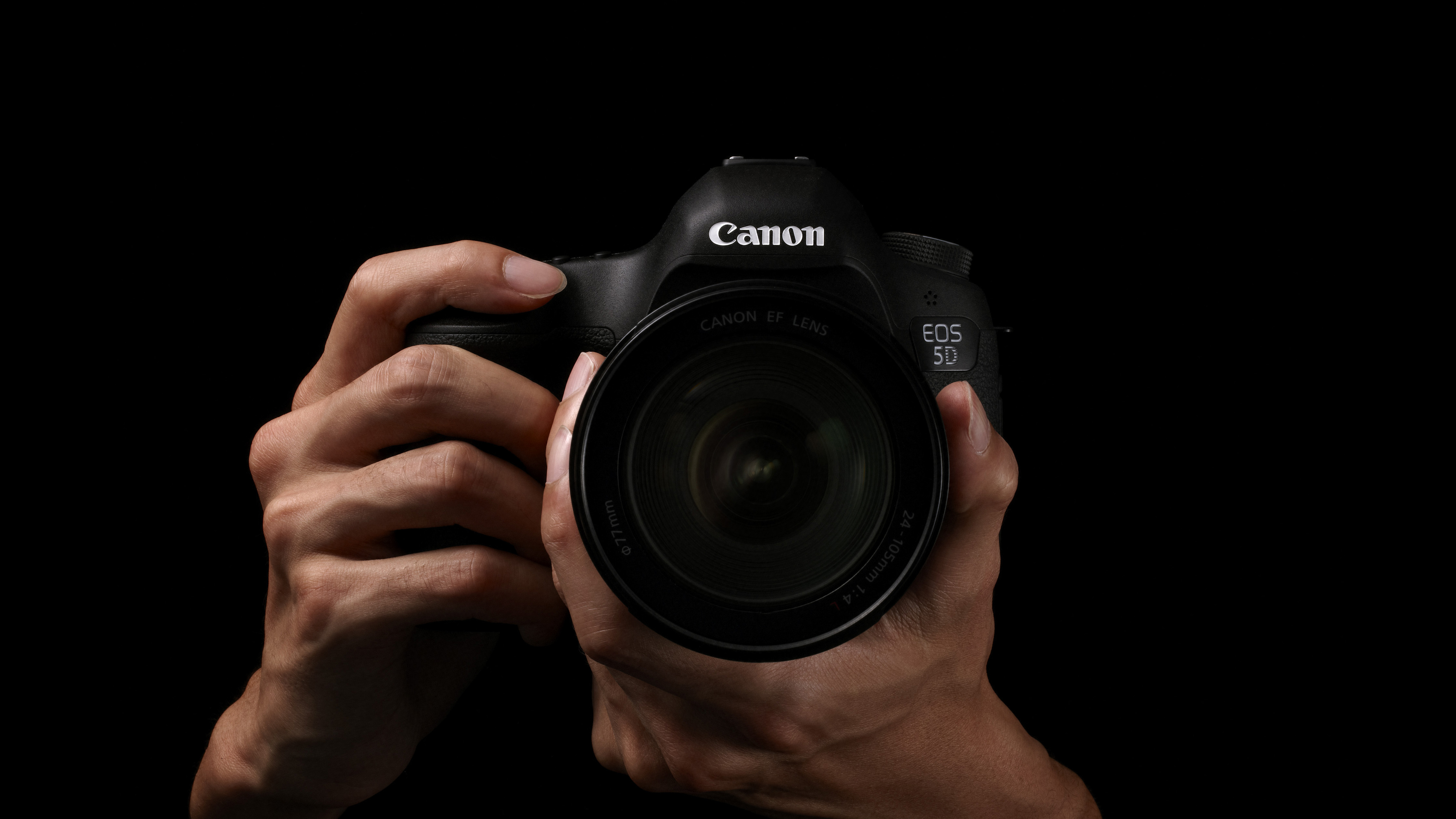
Canon EOS 5D Mark III
It may be getting on a bit, but the EOS 5D Mark III is a very capable camera, and it now costs about the same as the EOS 6D Mark II. The 6D Mark II is faster and lighter, while the more sensitive AF points make it a better option if you're using a teleconverter. However, the 5D Mark III's wide 61-point AF arrangement shouldn't be overlooked, and neither should its more robust feel.
Read the full review: Canon EOS 5D Mark III
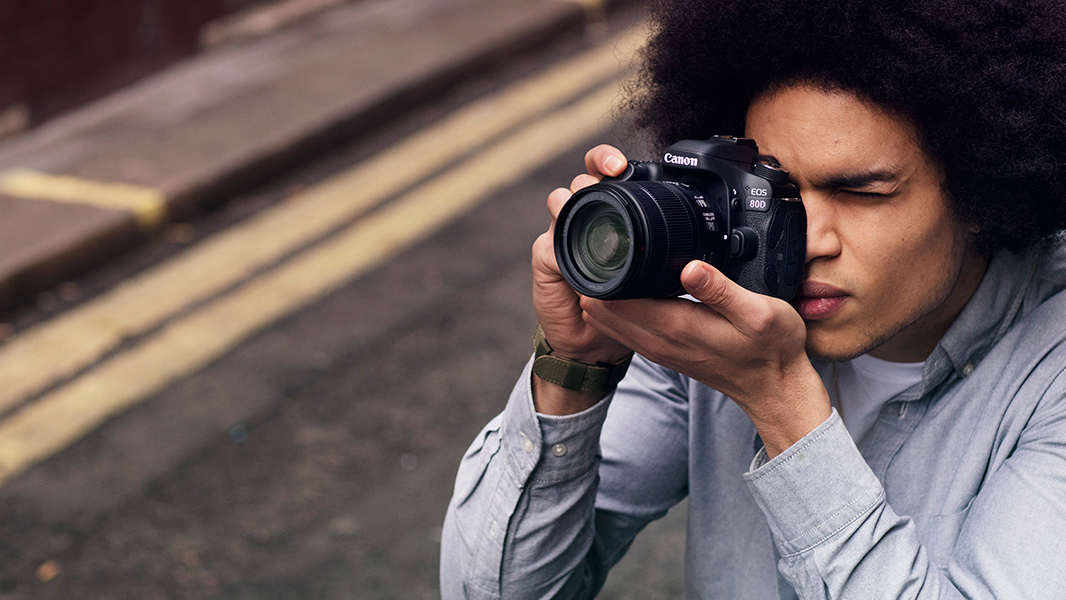
Canon EOS 80D
If you're looking to upgrade from something like the EOS Rebel T6i / 750D or T7i / 800D, and you've invested in some EF-S lenses, you might be better served by the EOS 80D, which has a very similar set of features to the 6D Mark II, with the exception of the latter's full-frame sensor.
Read the full review: Canon EOS 80D